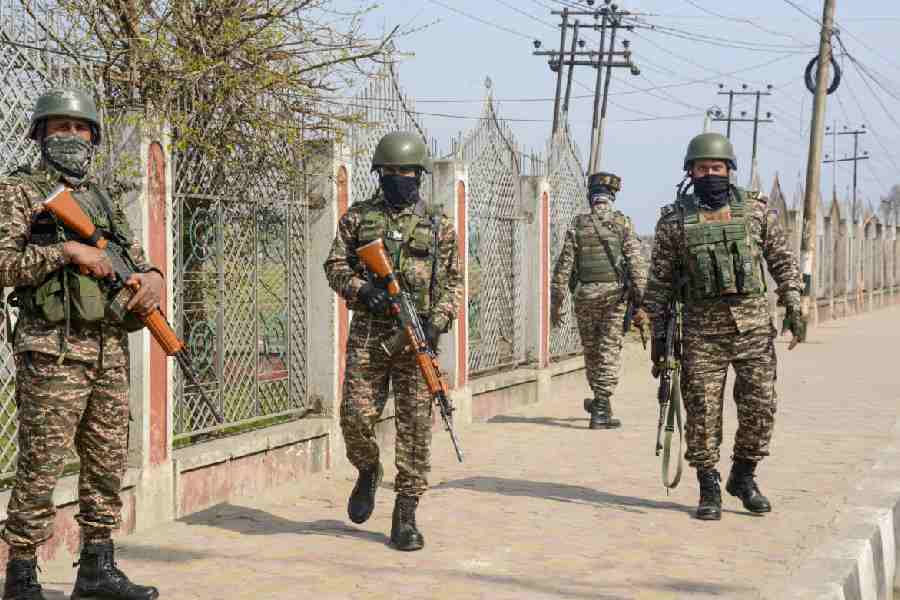

A lesser adjutant - a large wading bird from the stork family and popularly known as Garuda - was found wounded in a forest village of Chatra district, 160km from Ranchi, on Saturday, triggering a poaching alert among conservationists.
The solitary bird, which is labelled vulnerable by the International Union for Conservation of Nature (IUCN), was sent to the rescue centre at Bhagwan Birsa Biological Park in Ormanjhi, near the capital, late on Sunday evening. The zoo's assistant conservator R.N. Thakur said the injuries weren't of life-threatening nature, and would heal with time and care.
Chatra DFO (south) Madhukar said the lesser adjutant ( Leptoptilos javanicus) was rescued from Bargaon village under the Tandwa forest range, bordering Hazaribagh, following a tip-off.
"It is perhaps the first time a Garuda has been spotted in our district. It is an adult whose sex is yet to be ascertained and weighs over 10kg. It had bruised and swollen legs when we found it. Local residents may have stoned it out of curiosity because it is a very large bird or worse, hunters may have been trying to kill it," the senior forester said.
With its upright stance, the bald-headed lesser adjutant stands tall at 43-47 inches and weighs 6kg on an average.
Madhukar maintained that the presence of Garuda had been reported from other parts of Jharkhand. "Even today (Monday), one was spotted near a pond in Silli, close to Ranchi. The local officer circulated a picture over phone."
The lesser adjutant stalks around wetlands, feeding mainly on fish, frogs, reptiles and large invertebrates. It rarely feeds on carrion. These are solitary birds except during the breeding season when they form loose colonies.
According to Satya Prakash, an avid birder and state co-ordinator of the Indian Bird Conservation Network, the lesser adjutant is on revival mode in Jharkhand, but is equally under threat owing to lack of awareness.
Three years ago, Prakash authored a paper for the Bombay Natural History Society, after he and fellow conservationists spotted a nesting site in Petarwar block of Bokaro.
"No studies have been conducted about this species in the state, so, it is difficult to draw a concrete reference on their status. However, independent sightings and study by some experts suggest revival. In 2011, four adults were sighted at Udhwa Bird Sanctuary in Sahebganj though there are no records of breeding in the area," Prakash said.
Two more sightings were recorded before Bokaro - one in Lohardaga district a few years ago while a single individual was seen in 2012 in Rangamatia area of Seraikela-Kharsawan district. Then, in February 2013, during the survey in Bokaro, a total of 15 adult lesser adjutants and five chicks were spotted in Ambadih Tola village, 6km north of Petarwar block.
Local residents claim, before 1970, there were 50 nests every year in Bokaro, but the birds disappeared because of various factors including hunting. "Since 2011, conservation efforts has revived the stork population, which has roughly touched 30," said a local source.
Jamshedpur-based ornithologist K.K. Sharma stressed that besides environment issues like fragmented forests, poaching was a reason of concern. "There have been reports of hunting for trophy or food. Awareness generation about this vulnerable species is the need of the hour," he said.
How can the state strictly enforce conservation laws? Tell ttkhand@abpmail.com










